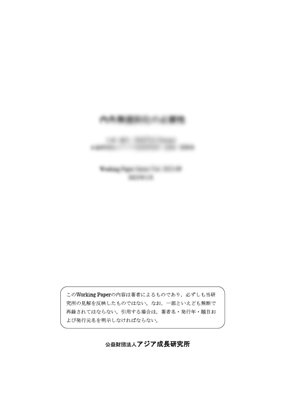Comparative Advantage in Japan, Korea and Taiwan between 1980 and 1996: Testing for Convergence and Implications for Closer Economic Relations

| 執筆者 | William James, Oleksandr Movshuk |
|---|---|
| 発行年月 | 2000年 12月 |
| No. | 2000-24 |
| ダウンロード | 323KB |
内容紹介
The possibility that Korea and Japan will enter into a free trade agreement (FTA) early in the 21st Century represents a profound change in the trade policy of these two major East Asian economies. This paper seeks to explore the basis for such an agreement by comparing export patterns of the two partner countries (Japan and Korea) with that of a non-member that is geographically close and is also a major exporter of machinery (Taiwan). Indices of revealed comparative advantage (RCA) are calculated for 217 3-digit SITC categories for two sub-periods (1980-1987 and 1988-1996). Median RCA values for each sub-period are used to get Spearman rank correlation coefficients, which are then tested for significance between each pairing of partners (Japan-Korea, Korea-Taiwan and Japan-Taiwan). Finally we test for convergence of export patterns using Daniel’s test. We find that each partner has a statistically significant correlation of RCA indices and that export patterns of Korea and Taiwan are converging with that of Japan. In the case of Taiwan and Korea there is a significant correlation in RCA indices, however, there is no significant convergence between their export patterns over time. Finally, we identify sectors where trade diversion is likely to occur and provide an upper-bound estimate of the potential amount of trade that might be diverted from Taiwan by a Japan-Korea FTA.
